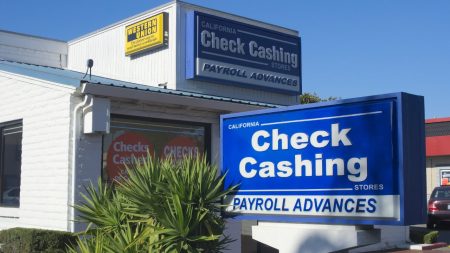Key takeaways
- The application process for federal student loans is separate from the private student loans application process, and the lending terms tend to differ between the two.
- You’ll need to fill out the FAFSA form, which is free and opens in October each year, in order to unlock federal student loans and federal student aid.
- Private student loans come from banks, credit unions and online lenders, and each lender typically has a different process for applying and different requirements for approval.
While both federal and private student loans can help you finance your degree, it’s best to start with federal student loans because of their unique benefits and borrower protections. However, there are borrowing limits for federal student loans that some borrowers might exceed, and you do have to qualify for federal loans.
As you consider how to finance your education, consider the pros and cons offered by federal and private loans. Then, review the different application processes for different types of student loans so you can complete your applications correctly and on time.
How to get student loans
Federal student loans are backed by the U.S. government and offer a range of payment plans, borrower protections and competitive interest rates. Private student loans are provided by private lenders, and like with other types of loans, your approval is based on factors such as your credit history and income.
Although both fund your education, the process of applying for federal student loans is very different from applying for private student loans.
How to get a federal student loan
Backed by the U.S. government, federal student loans offer a range of payment plans, borrower protections and competitive interest rates. Because they come with competitive terms and no credit check, it’s best to apply for federal aid before seeking private loans, especially if you’re an undergraduate student. Ideally, you should start the application process a year before you plan to attend school.
- Set up an account. Before you apply for a federal student loan, you have to create a Federal Student Aid (FSA) account to complete the FAFSA online.
- Gather your documents. You can get a sneak peek of the FAFSA on the worksheet provided by the FSA. Compile a list of schools that should receive your FAFSA form and gather your proof of identification and finances. You’ll also have to collect these materials from your parents if you’re listed as a dependent.
- Complete the FAFSA. Filling out the Federal Application for Student Aid (FAFSA) is a free process that takes around 30 minutes. The FAFSA form is used to determine your eligibility for federal student loans and if you qualify for grants, scholarships or Federal Work-Study.
- Review your SAR. You will receive your Student Aid Report (SAR) in one to three business days after submitting your FAFSA. This report summarizes the information you submitted and estimates the amount of aid you are eligible for. Review your SAR for accuracy.
- Consider your financial aid offers. Each school you sent your FAFSA will calculate your expected cost of attendance and send you a financial aid letter listing loans, scholarships, grants and work-study options.
- Complete loan counseling. Before you receive a loan, you’re required to complete loan entrance counseling to learn how your loan works, including repayment terms and how to avoid defaulting. You’ll also be required to sign a promissory note before accepting the loan.
- Accept your financial aid offer. The amount of aid you’re offered will vary by school. Once you’ve compared offers and chosen a school, contact the school to accept the financial aid. If it includes federal student loans, the school will tell you how to accept them.
Your financial aid offer will explain whether you qualify for subsidized or unsubsidized federal student loans. Subsidized loans are for undergraduate students with financial needs, and the interest on your loans is paid by the U.S. Department of Education while you are in school and during deferment. If your loan is unsubsidized, you will cover all interest costs, which start accruing when the loan is disbursed.
How to get a private student loan
Private student loans may be a good option if you don’t qualify for federal student aid, or if you’ve reached your borrowing limit with federal student loans. Unlike federal student loans, private student loans are offered by banks, credit unions, and online lenders. Your eligibility — and your private student loan interest rate — are based on factors such as your credit score, income and assets, debts, and major.
- Comparison shop multiple lenders. Compare their interest rates, maximum loan amounts, fees and repayment terms. Consider whether the lenders allow cosigners, which could increase your chance of approval and lower your rate. You should also ask about hardship options and check third-party reviews.
- Check your eligibility. Before applying, determine whether your credit history and income meet the lender’s qualifications. You can check your credit reports for free weekly at AnnnualCreditReport.com. To qualify for a private student loan on your own, you generally need to have good credit, which is generally a FICO score 670 or above. If you don’t meet the requirements, you’ll need a cosigner who can.
- Complete the application. Be prepared to provide your Social Security number, proof of income, a list of debts, and contact information. You’ll also need to provide information about the school you’re attending, its costs and your degree. Depending on the lender, completing your application could take anywhere from half an hour to a few days.
- Wait for verification. The lender will confirm your cost of attendance with your school, which may take a few weeks. Once your school verifies the information, the lender typically releases the funds directly to the school.
Although private student loans can be a great option when you don’t qualify for enough federal aid, federal loans are generally ideal for a few key reasons. For starters, private loans aren’t eligible for some of the borrower protections that come with federal student loans, such as income-driven payment plans. Deferment and forbearance also vary by lender, and if the loan comes with a variable interest rate, it can increase anytime during repayment.
Where to get student loans
You can start your application for federal student loans by creating your FAFSA account on the StudentAid.gov website. Your SAR will tell you whether you qualify for scholarships, grants or Federal Work-Study. It will also tell you which type of federal student loans you qualify for.
- Direct subsidized loans. These are designed for undergraduates with financial need. Interest is deferred until the six-month grade period you enter after dropping below full-time status ends.
- Direct unsubsidized loans. Similar to subsidized loans, direct unsubsidized loans are meant for undergraduate, graduate, and professional students, regardless of financial need. Interest begins accruing as soon as they are disbursed.
- Direct PLUS loans. PLUS loans are for graduate or professional students, as well as parents of dependent undergraduates who have educational expenses not covered by other financial aid.
Private student loans are available from banks, credit unions and online lenders. Sometimes, it may be easier to qualify for a loan if you go through a bank or credit union where you already have an account, and you may qualify for special incentives. You can start investigating options using Bankrate’s table of best student loan rates.
When to apply for student loans
Begin applying for student loans the year before you plan to attend school, and start by applying for federal loans first. The FAFSA opens in October, and you should complete it as early as possible because some programs are awarded on a first-come, first-served basis. The last day to submit your FAFSA is June 30 of each year, and you will need to complete a new FAFSA every year because your eligibility status can change.
Once you know your federal borrowing options, you can determine if you need private student loans and how much you’ll need to borrow. It’s recommended you apply for private loans at least two months before your tuition is due to ensure your loan money arrives by your school’s deadline. Some schools may have earlier FAFSA cutoffs than others. Many schools also use the information from the FAFSA to determine which students receive institutional scholarships and grants.
What to consider before you get a student loan
You will typically pay back your student loans over the course of many years, so it can be helpful to consider the full picture before applying.
Other ways to pay for college
While you may need student loans to afford school, you can save yourself money and increase the ROI of your degree by reducing how much you need to borrow. Grants and scholarships don’t need to be repaid, and many schools offer scholarships that you can apply for through the financial aid office or your high school’s guidance office.
Some private organizations also offer scholarships. Check with organizations you or your parents are a part of, through your local library or by searching online.
Another option is to work part-time while attending school. That way, you can cover your basic living expenses instead of using loan money to pay for expenses like food, rent and transportation. Working may also help you qualify for tuition reimbursement through your employer.
Private vs. federal student loans
Federal loans are the preferred student loan options because, unlike private ones, they come with access to loan forgiveness and income-driven repayment plans. They’re also the best choice if you’re looking to qualify for a student loan with poor credit — most federal loans don’t require a credit check.
Private loans can be a good option for borrowers who don’t qualify for federal student loans or who have met their federal loan limit. Private lenders often allow students to borrow up to the full cost of attendance. Just keep in mind that many come with variable interest rates, and your options for forbearance and hardship may be limited.
How much you need to borrow
You can keep your student loan monthly payments low by borrowing the minimum amount needed to cover your school expenses. Colleges and universities are required to disclose an estimated cost of tuition, fees and room and board each year. This is known as the school’s cost of attendance (COA) and can usually be found on its website.
If you’re considering private student loans, start by using your school’s COA to create a budget. Subtract any money you are receiving from scholarships, grants and your job to determine how much you need to borrow in private loans.
Long-term financial impacts
Before accepting your student loans — federal or private — use a student loan calculator to estimate your monthly payments, how long it will take to repay your loans and how much total interest you will pay.
Tools like the Bureau of Labor Statistics database can help you estimate your starting salary after graduation based on your major or chosen profession. Understanding this and the cost of living where you plan to live after college can help you determine how your student loans will impact you in the long term.
Bottom line
Once you’ve applied for scholarships and grants, the next step in attending college is applying for student loans. Start by applying for federal loans using the FAFSA and determining your school’s COA. Then determine whether you need private loans.
If you decide you do need private student loans, shop around and compare offers to get the best rate and terms. Regardless of which type of student loan you choose, borrow only what you need to keep your monthly payments affordable.
Frequently asked questions
Read the full article here












